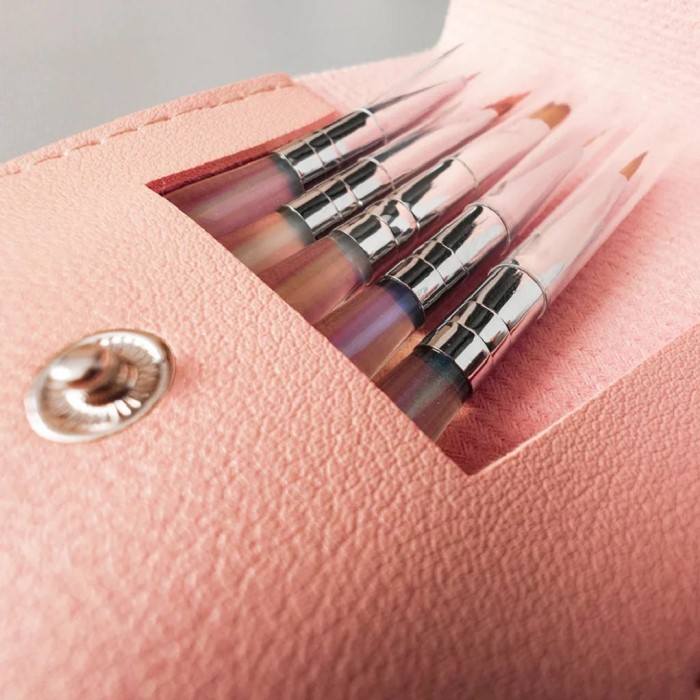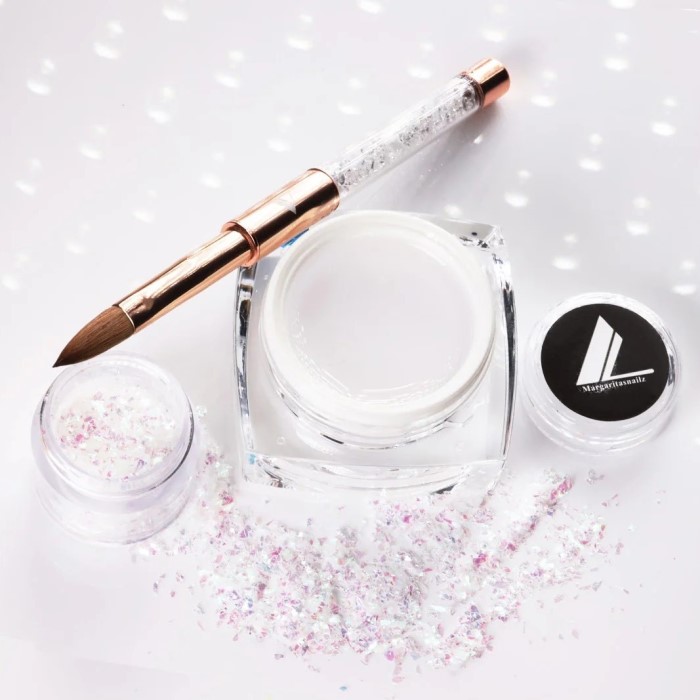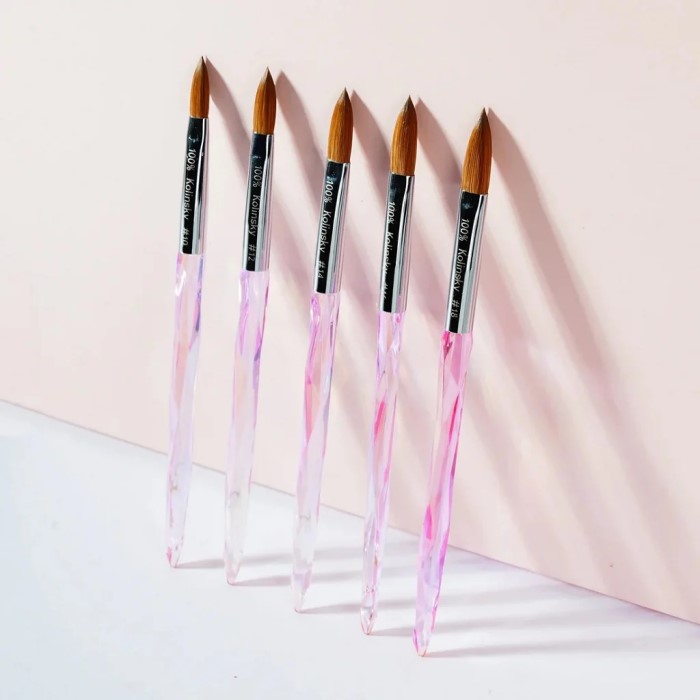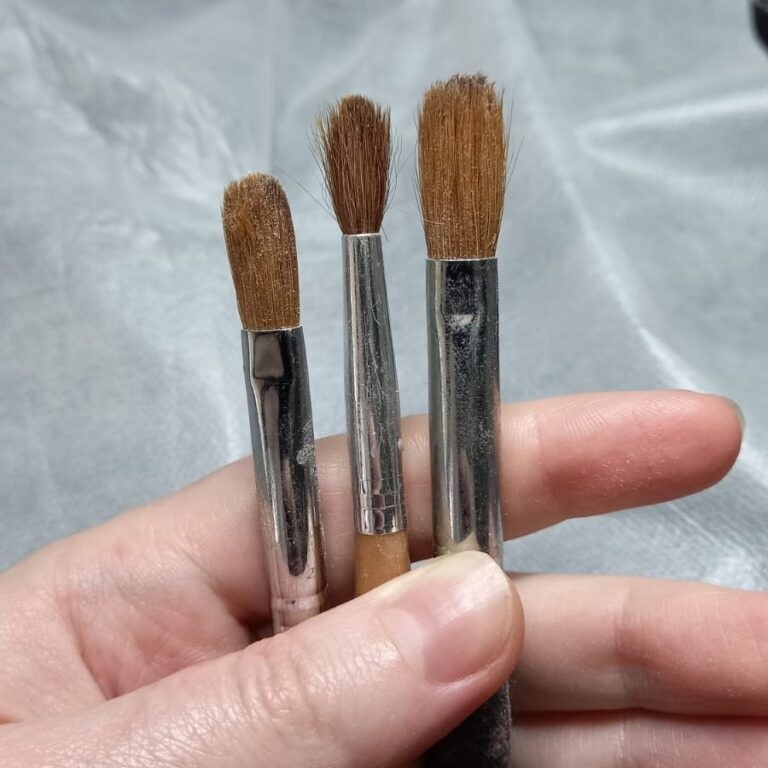
How to Clean Acrylic Nail Brushes: Tips from Top Nail Artists
Introduction to Acrylic Nail Brush Care
Acrylic nail brushes are an indispensable tool for nail artists, allowing them to create beautiful and intricate designs. However, many nail professionals and enthusiasts overlook the importance of maintaining these brushes. Over time, acrylic can build up in the bristles, leading to a host of issues ranging from impaired performance to reduced lifespan. Therefore, understanding how to clean acrylic nail brushes effectively is crucial. This article will provide comprehensive insights on cleaning methods, preventative care, and expert tips from top nail artists. By implementing these strategies, you can ensure your brushes remain in top-notch condition, contributing to your success in this vibrant craft.
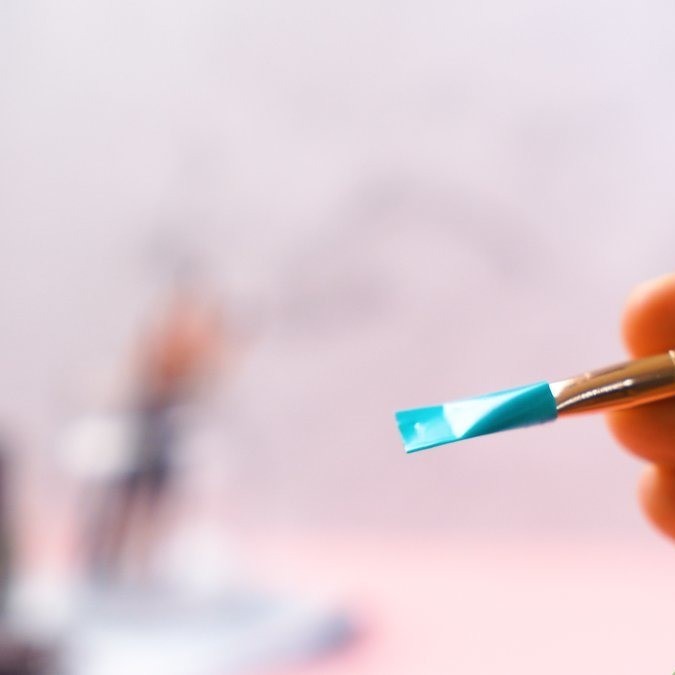
Why Cleaning Your Acrylic Nail Brushes Is Crucial
Cleaning acrylic nail brushes is not just a matter of hygiene; it significantly impacts the quality of your nail design work. Brushes that are not cleaned properly can harbor dried acrylic, which can severely affect their effectiveness during application. An unclean brush will not only apply products unevenly but can also lead to streaks and unsightly finishes, ultimately compromising the quality of your work. Furthermore, hard acrylic particles left in the bristles can damage the brush over time, leading to fraying or loss of shape.
Additionally, investing time in proper care can save you money in the long run. Frequent replacements of brushes due to neglect can add up, making consistent maintenance a more economical choice. In essence, a clean brush results in better application, improved craftsmanship, and a longer lifespan for your tools. Therefore, learning how to clean acrylic nail brushes is essential for both beginners and seasoned professionals.
The Best Cleaning Solutions for Acrylic Nail Brushes
When it comes to choosing the right cleaning solution for your acrylic nail brushes, there are several effective choices available, each with its unique benefits:
- Monomer: The most widely suggested cleaning solution among nail artists is acrylic monomer, which is specifically designed to dissolve acrylic products. Dipping your brush in monomer helps to soften and break down any acrylic buildup. This process is usually the most effective for cleaning the bristles without damaging them.
- Brush Cleaner: Specialized brush cleaners exist that cater specifically to acrylic nail brushes. Many of these products are formulated to remove acrylic while conditioning the bristles, making them a great option for maintaining brush health. Always check the label to ensure it is safe for use with acrylics.
- Soap and Water: A gentle soap mixed with lukewarm water can serve as a basic cleaning method. While not as potent as monomer, it can help remove a light buildup of acrylic. Make sure to rinse thoroughly afterward to eliminate any soap residue.
- Rubbing Alcohol: Another possible cleaning agent is rubbing alcohol. It works to dissolve acrylic but should be used sparingly, as overuse might compromise the bristles’ quality.
Each cleaning method has its advantages, and choosing the right one depends on your preference and available resources. The primary objective remains the same: to effectively remove acrylic residue without harming the brush fibers.
Step-by-Step Guide on How to Clean Acrylic Nail Brushes
Effective cleaning requires a systematic approach. Here’s a step-by-step guide on how to clean acrylic nail brushes properly:
- Gather Your Materials: Start by collecting everything you’ll need, including your cleaning solution (monomer, brush cleaner, or soap and water), paper towels, and possibly a small glass jar for soaking the brushes.
- Dissolve Acrylic Build-Up: Dip the brush head into your chosen cleaning solution. If using monomer, a quick dip for approximately 10 to 15 seconds should suffice.
- Wipe the Brush: After soaking, gently wipe the bristles on a paper towel or lint-free cloth. Use a light hand to avoid pulling on the bristles, which can damage their integrity. Continue wiping until you see no more acrylic residue.
- Rinse if Necessary: If you’ve used soap, it is essential to rinse the brush under lukewarm running water to ensure all soap is removed. This step is crucial, as soap residue can impact the performance of the brush in future applications.
- Shape the Bristles: After cleaning, reshape the bristles by gently pinching them between your fingers. Correctly shaping the bristles will help preserve their form and enable better precision during application.
- Air Dry the Brush: Place the brush flat on a clean paper towel to air dry. Avoid standing the brush upright to prevent water from entering the ferrule, which could degrade the adhesive that holds the bristles together.
By following these steps, you will ensure that your acrylic nail brushes remain clean and ready for use, providing optimal performance every time you create nail art.
Preventing Acrylic Nail Brushes from Hardening
Besides knowing how to clean your acrylic brushes effectively, it’s equally important to take measures to prevent acrylic from hardening in the first place:
- Regular Cleaning: Make it a routine to clean your brushes immediately after use. This simple step prevents acrylic from hardening and allows for easier cleaning in subsequent sessions.
- Use Quality Products: Consider using high-quality acrylic products that are easier to work with and dissolve. High-quality products tend to adhere better and can minimize cleanup time.
- Proper Storage: Store your brushes properly when not in use. Avoid placing them in direct sunlight or in damp areas, which can alter the bristles’ shape and effectiveness. Keeping them in a brush case or upright in a holder will protect them from environmental factors.
- Seal Your Acrylic Containers: Always ensure that your acrylic containers are tightly sealed when not in use. This helps prevent air exposure, which can cause the acrylic to dry out faster.
By implementing these preventive measures, your brushes will stay cleaner for longer and maintain their performance, allowing you to focus on your artistry without interruptions.
What Can You Use to Clean Your Acrylic Nail Brush?
While we’ve already discussed several cleaning solutions for acrylic brushes, there are some alternatives worth mentioning, as they can provide additional options based on availability or preference.
Conditioning Products
- Choice of Products: Some nail artists choose to use hair conditioners or specialty oils when cleaning their brushes. These products are designed to nourish and condition hair, and they can also be beneficial for maintaining acrylic nail brushes.
- Benefits: Hair conditioners and oils can help break down and pull acrylic residue from the bristles effectively. This is especially useful for brushes that have seen heavy usage or have significant buildup.
- Moisture Retention: In addition to cleaning capabilities, these conditioning products provide essential moisture to the brush fibers. This moisture helps prevent the bristles from becoming dry and brittle over time, ensuring they retain their flexibility and shape.
- Application: To use conditioning products, nail artists typically apply a small amount to the brush and gently work it through the bristles. Afterward, they rinse thoroughly with water to eliminate any residue from the conditioner itself, leaving the brush clean and conditioned.
DIY Solutions
- Overview of DIY Solutions: For those who prefer a more hands-on approach, creating a DIY cleaning solution is a viable option. Using ingredients that are readily available at home, such as vinegar and water, can provide an effective cleaning method for acrylic brushes.
- Recipe: A common DIY solution involves mixing equal parts of white vinegar and water in a bowl or container. This mixture can be used to soak the brushes or gently cleanse the bristles.
- Effectiveness of Vinegar: Vinegar is known for its natural cleaning properties, and it can effectively help dissolve acrylic residues. Its acidity helps to break down buildup without harming the bristles.
- Caution: However, it is advisable to test any DIY cleaning solutions on less critical brushes before using them on your primary tools. This precaution ensures that there are no unwanted reactions or damage to more expensive or essential brushes.
- Initial Testing: Conduct a small test by applying the DIY solution to a brush that you use infrequently. Observe the results to see if the mixture effectively cleans without causing any adverse effects.
- Rinsing After Use: After using a DIY solution, ensure that you rinse the brushes thoroughly to remove any lingering vinegar or other ingredients. This will prevent any residue from affecting future nail applications.
FAQs on Acrylic Nail Brush Care
What Can I Use to Clean My Acrylic Nail Brush?
You can use monomer, specialized brush cleaners, gentle soap with water, or rubbing alcohol. Each serves its purpose based on the type of cleanup needed.
How Do I Keep My Acrylic Nail Brush From Getting Hard?
To prevent hardening, ensure you clean your brush immediately after use and store it properly.
How Do You Get Dried Acrylic Out of Brushes?
Soaking the brush in monomer for a brief time can effectively break down dried acrylic, making it easier to clean.
Can I Clean Acrylic Brushes with Acetone?
Using acetone for cleaning is not advisable, as it may damage the bristles over time. Stick to monomer or specialized cleaners for optimal results.
Conclusion: Essential Knowledge for Nail Artists
In conclusion, understanding how to clean acrylic nail brushes is essential for both amateurs and professionals in the nail art industry. By following the guidelines provided, you can maintain your brushes in optimal condition, ensuring they perform well during every application. Remember to clean your brushes after each use, choose the right cleaning solutions, and implement preventative measures to avoid hardening. The effort you invest in brush care will reflect in your work, leading to outstanding results and customer satisfaction. With well-maintained tools, you’ll be well-equipped to bring your creative visions to life, elevating your skills as a nail artist.
